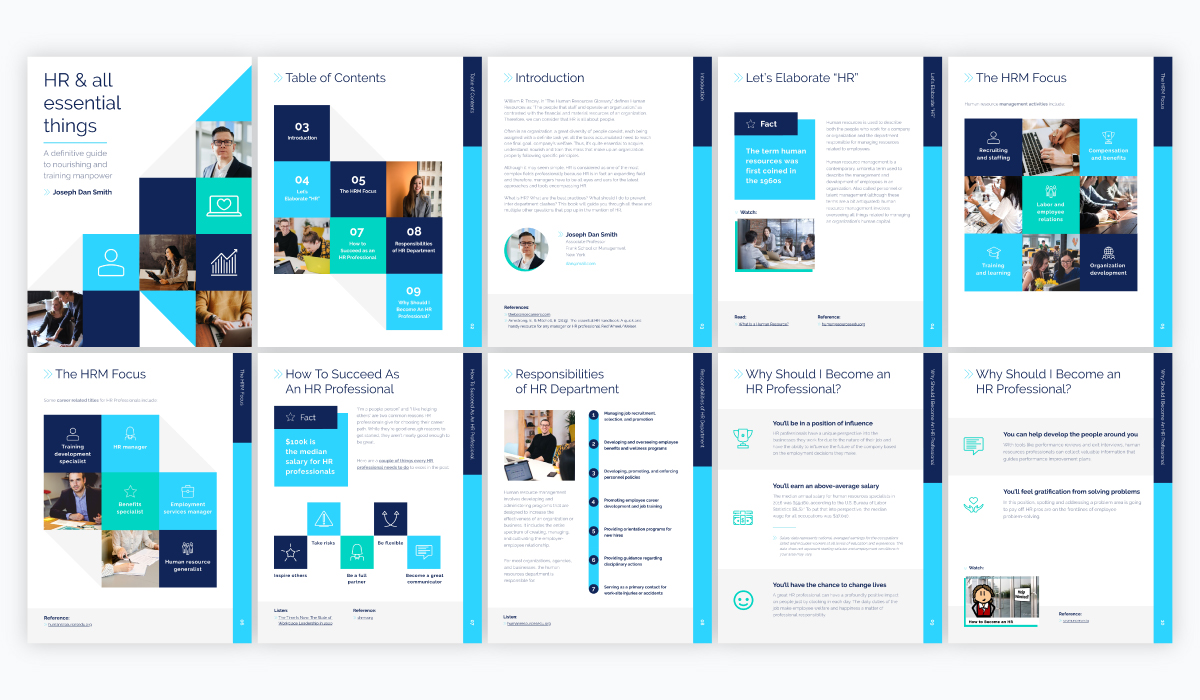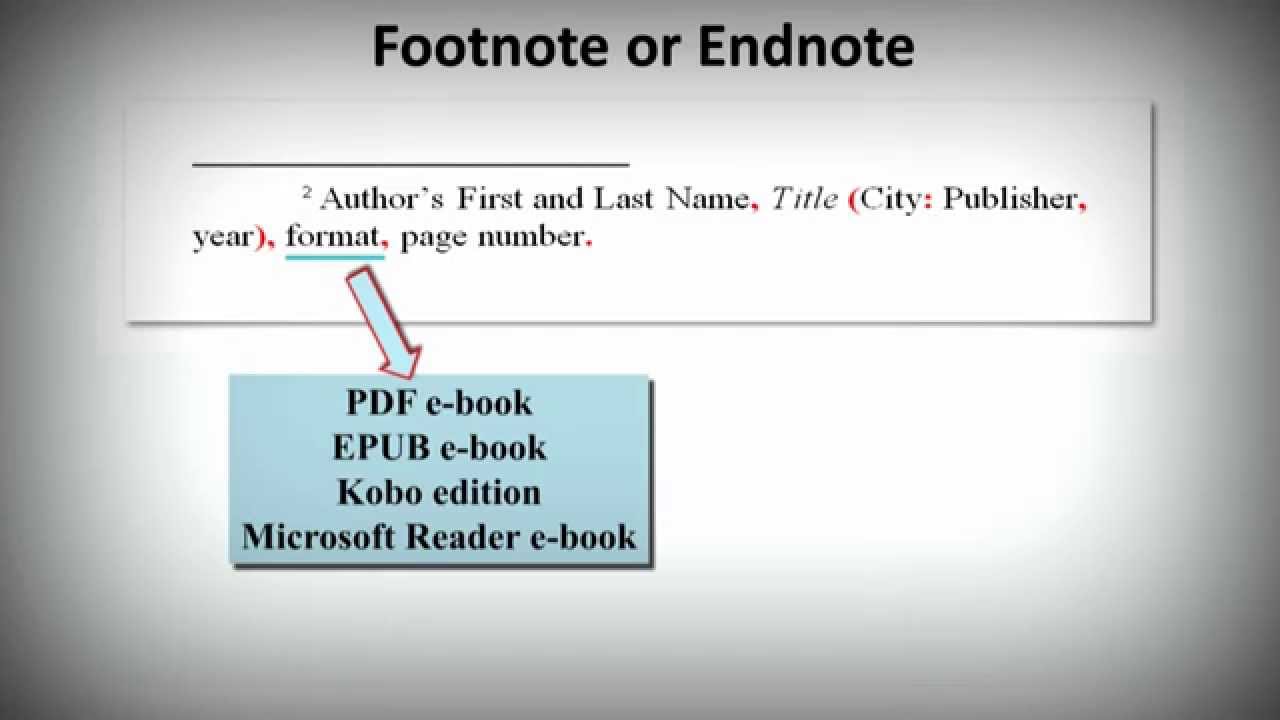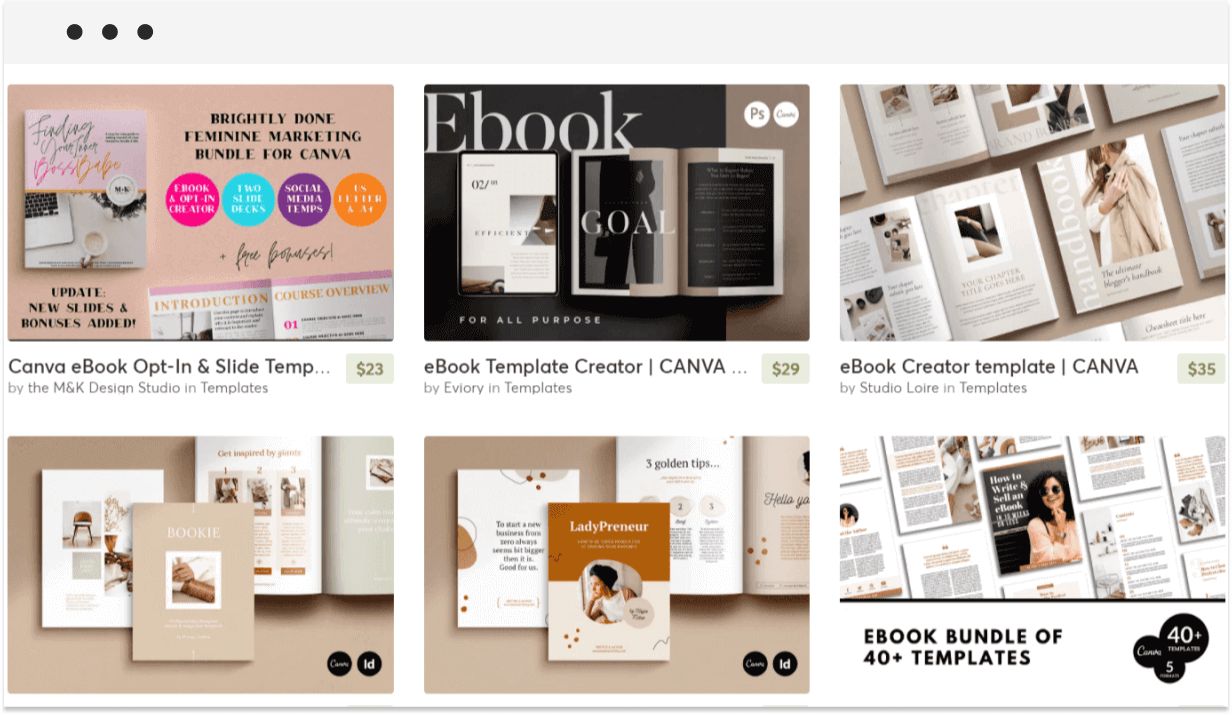Introduction
Welcome to the world of eBook writing! In this age of digital publishing, writing an eBook has never been more accessible or lucrative. Whether you’re an aspiring author or a business owner looking to establish yourself as an authority in your industry, creating an eBook can help you achieve your goals.
An eBook, short for electronic book, offers a convenient and portable format for readers to access and consume content on various devices. With an eBook, you have the freedom to express your knowledge, creativity, and expertise in a way that resonates with your target audience.
This guide will provide you with the steps and insights to write an eBook quickly and effectively. We will cover everything from setting up your writing environment to formatting and publishing your eBook, as well as promoting and marketing it to maximize its reach and impact.
Writing an eBook fast does not mean compromising on quality. With careful planning, organization, and efficient writing techniques, you can create a valuable and engaging eBook that captivates your readers.
Throughout the process, we’ll provide tips and techniques to help you streamline your writing workflow, conduct research effectively, stay motivated, and overcome common challenges along the way.
Before we dive into the details, it’s important to note that writing an eBook requires dedication, discipline, and a passion for your chosen topic. It’s an opportunity to share your expertise, connect with your audience, and leave a lasting impression.
So, whether you’re writing a fiction novel, a self-help guide, a cookbook, or a niche-specific eBook, the principles and techniques discussed in this guide will apply to a wide range of genres and topics.
Now, let’s get started on your journey to becoming an eBook author!
Setting Up Your Writing Environment
Creating a conducive writing environment is essential for your productivity and focus when writing an eBook. By establishing a dedicated space and implementing key elements, you can optimize your workflow and minimize distractions. Here are some important steps to set up your writing environment:
- Choose a quiet and comfortable space: Find a quiet area in your home or office where you can work without interruptions. Ensure that the space is comfortable, well-lit, and free from distractions.
- Organize your workspace: Keep your writing area tidy and organized. Invest in a desk or surface that is large enough to accommodate your laptop or writing materials. Use storage solutions, such as shelves or drawers, to keep your reference materials and notes within reach.
- Eliminate distractions: Minimize distractions that can hinder your focus. Turn off notifications on your devices, close unnecessary tabs or applications on your computer, and let your loved ones know that you need uninterrupted time for writing.
- Gather your writing tools: Make sure you have all the necessary writing tools at your disposal. This includes your preferred writing software or word processor, a comfortable keyboard, and any physical notepads or pens you may prefer to use.
- Create a productive ambiance: Some writers find background noise or music helpful for concentration. Experiment with different environments to find what works best for you. You might try playing instrumental music or ambient sounds, or use noise-cancelling headphones if you prefer complete silence.
- Invest in ergonomic equipment: Consider investing in an ergonomic chair, adjustable desk, or other equipment designed for long periods of sitting. Taking care of your physical comfort will help you stay focused and prevent fatigue or discomfort.
By setting up your writing environment properly, you are creating a space that supports your creativity, focus, and overall writing experience. Remember, everyone’s ideal writing environment may differ, so don’t be afraid to experiment and make adjustments to find what works best for you.
Choosing a Topic and Developing an Outline
Choosing the right topic for your eBook is crucial to its success. It should be something that aligns with your expertise, interests, and target audience. Here are some steps to help you choose a topic and develop an outline:
- Identify your expertise: Start by assessing your knowledge, skills, and experiences. What are you passionate about? What expertise do you have that can provide value to your readers? Consider your professional background, hobbies, or personal interests that you can leverage to create a unique and informative eBook.
- Research market demand: Conduct market research to identify topics that are in high demand. Look for trends, popular keywords, and discussions in your niche. This will help ensure that there is an audience interested in your chosen topic.
- Narrow down your topic: Once you have identified a general area of interest, narrow down your topic to make it more specific and focused. This will help you provide targeted and comprehensive information to your readers. For example, if you are interested in cooking, you can choose a specific cuisine, dietary preference, or cooking technique to focus on.
- Consider your target audience: Define your target audience and understand their needs, challenges, and desires. This will help you tailor your content to their specific requirements and ensure that your eBook resonates with them. Consider demographics such as age, gender, geographic location, and interests.
- Brainstorm and develop an outline: Start brainstorming ideas and create an outline for your eBook. Break down your topic into chapters or sections and identify the key points or subtopics you want to cover. This will serve as a roadmap for your writing and help you maintain a logical flow throughout your eBook.
- Research and gather reference materials: Conduct thorough research to gather supporting information and examples for your eBook. Utilize reputable sources such as books, articles, case studies, or interviews to enhance the credibility and reliability of your content.
Remember, your topic should not only align with your expertise but also have a market demand and interest. By choosing a topic that you are knowledgeable and passionate about, and that resonates with your target audience, you will be setting a strong foundation for writing a valuable eBook.
Conducting Research Efficiently
Research plays a vital role in creating a well-informed and valuable eBook. It provides credibility to your content and ensures that you are providing accurate and up-to-date information to your readers. Here are some tips to help you conduct research efficiently:
- Identify reliable sources: Start by identifying reliable and authoritative sources for your research. Look for reputable websites, academic papers, books, and industry publications. Avoid relying solely on information from random blogs or forums, as they may not always be accurate or trustworthy.
- Use search engines effectively: Learn how to use search engines efficiently to find the information you need. Utilize advanced search operators, such as quotation marks for exact phrase searches or the minus sign to exclude certain keywords. This will help you narrow down your search results and find relevant and reliable sources quickly.
- Utilize scholarly databases: If your topic requires in-depth research, consider leveraging academic databases like JSTOR, PubMed, or Google Scholar. These databases provide access to scholarly articles and research papers that can provide valuable insights and data for your eBook.
- Take organized notes: Keep a system for taking organized notes while conducting research. Use digital tools like note-taking apps or software to save and categorize important information, quotes, and references. This will make it easier to refer back to your sources and ensure proper citation in your eBook.
- Verify the credibility of sources: Before including information from a source, verify its credibility and reputation. Check for the author’s qualifications and expertise, the publication date, and any potential biases. Be wary of sources that present biased or unverified information.
- Stay updated: Continuously monitor industry news and trends to stay updated on the latest developments in your topic area. This will allow you to provide the most current information to your readers and differentiate your eBook from outdated content.
- Ask for expert opinions: Reach out to experts or professionals in your field for their insights and opinions. Conduct interviews or gather testimonials that can add value and credibility to your eBook. This can help provide unique perspectives and real-world experiences to your readers.
Remember to always properly cite your sources and give credit to the original authors to maintain ethical standards and avoid plagiarism. Conducting research efficiently and effectively will ensure that your eBook is backed by reliable information, enhancing its quality and providing value to your readers.
Creating a Writing Schedule
A consistent writing schedule is key to completing your eBook efficiently and on time. By establishing a structured routine, you can stay focused, maintain momentum, and make consistent progress. Here are some tips for creating an effective writing schedule:
- Assess your availability: Start by assessing your daily and weekly commitments. Take into account work, family, and other responsibilities to determine the available time slots for writing. Identifying these time slots will help you allocate dedicated writing time.
- Set realistic goals: Set realistic goals for your writing sessions. Determine how many words or pages you aim to write during each session. Breaking down the larger task into smaller chunks will make it more manageable and prevent overwhelm.
- Choose the right time of day: Figure out the time of day when you are most productive and creative. Some writers prefer early morning when their minds are fresh, while others find their flow in the evening. Find what works best for you and schedule your writing sessions during that time.
- Establish a routine: Consistency is key. Establish a consistent writing routine by designating specific days and times for writing. Treat these writing sessions as important appointments with yourself and prioritize them accordingly.
- Eliminate distractions: Minimize distractions during your designated writing time. Put your phone on silent, close unnecessary tabs on your computer, and create a quiet and focused environment. Consider using productivity tools or apps that block distractions and keep you focused.
- Break it into smaller tasks: Break down your writing tasks into smaller, manageable chunks. For example, you can allocate one session to brainstorm ideas, another for research, and dedicated sessions for writing specific chapters. This approach helps you stay organized and focused on each task at hand.
- Accountability: Find an accountability partner or join a writing group to help you stay on track. Share your progress, challenges, and goals with others who can provide support and motivation. This external accountability can greatly enhance your consistency and productivity.
- Take breaks: Allow yourself regular breaks during your writing sessions. Taking short breaks helps maintain your focus and prevents burnout. Use these breaks to stretch, hydrate, or clear your mind. Physical and mental well-being are essential for maintaining a productive writing schedule.
Remember, creating a writing schedule is just the first step. The real challenge lies in sticking to it. Stay committed and disciplined, and don’t let excuses or distractions derail your progress. With a consistent writing schedule, you’ll be amazed at how quickly you can bring your eBook to life.
Getting into the Writing Flow
Getting into the writing flow is essential to boost your productivity and creativity while working on your eBook. When you can immerse yourself in a state of focused and uninterrupted writing, you can produce your best work. Here are some strategies to help you get into the writing flow:
- Clear your mind: Before starting your writing session, take a few minutes to clear your mind and eliminate distractions. Practice deep breathing exercises or meditation to calm your thoughts and center yourself.
- Warm up with freewriting: If you find yourself struggling to begin, warm up your writing muscles by doing a quick freewriting exercise. Set a timer for 10-15 minutes and write continuously without worrying about grammar or structure. This helps to break through any mental blocks and gets your creative juices flowing.
- Listen to background music: Experiment with playing soft background music to create a relaxing and inspiring atmosphere. Instrumental music, nature sounds, or ambient tracks can help drown out external distractions and boost your focus.
- Use writing prompts: If you’re experiencing writer’s block, try using writing prompts to kickstart your creativity. Engage in short writing exercises based on prompts related to your eBook’s topic. This will help stimulate your imagination and get your ideas flowing.
- Write without editing: During your writing sessions, focus on getting your ideas onto paper or screen without editing or overthinking. Adopt a mindset of “write now, edit later.” This allows your thoughts to flow freely without being hindered by self-criticism or perfectionism.
- Set specific writing goals: Set specific writing goals for each session, such as completing a certain number of paragraphs or reaching a specific word count. Breaking your writing into smaller, measurable goals provides a clear target and keeps you motivated.
- Create a supportive writing environment: Surround yourself with objects or images that inspire you and create a positive writing environment. This may include motivational quotes, pictures, or items related to your eBook’s topic. These visual cues can help set the mood and mindset for successful writing.
- Avoid multitasking: To get into the writing flow, avoid multitasking or switching between multiple tasks. Dedicate your entire focus to the writing process and eliminate any distractions that may disrupt your concentration.
- Take regular breaks: Give yourself short breaks during your writing sessions. Stand up, stretch, or go for a quick walk to refresh your mind and prevent mental fatigue. These short breaks can re-energize you and enhance your overall writing productivity.
Remember, getting into the writing flow may take time and practice. Experiment with different techniques and strategies to discover what works best for you. Once you find your rhythm, you’ll be able to effortlessly dive into the writing flow and make substantial progress on your eBook.
Editing and Proofreading Your eBook
Editing and proofreading are crucial steps in the eBook writing process that ensure your content is polished, error-free, and ready for publication. Here are some tips to effectively edit and proofread your eBook:
- Take a break before editing: After completing the initial draft of your eBook, take a break before starting the editing process. This allows you to approach the content with a fresh perspective and catch errors more effectively.
- Read aloud: Read your eBook aloud during the editing phase. This helps you identify awkward sentence structures, repetitive phrases, and inconsistencies in your writing. Hearing the words also makes it easier to spot grammatical errors and typos.
- Use editing tools: Utilize editing tools and software to catch common grammar and spelling mistakes. Tools like Grammarly and Hemingway Editor can help identify issues with sentence structure, word choice, and punctuation.
- Check for clarity and coherence: Ensure that your ideas are presented clearly and coherently throughout your eBook. Check for logical flow between chapters, paragraph transitions, and the overall structure of your content. Rearrange or rephrase sentences as needed to enhance clarity.
- Eliminate unnecessary repetition: Review your eBook for any unnecessary repetition or redundant phrases. Remove duplicate information and ensure that your content is concise and focused. Repetition can reduce the impact of your message and make your eBook feel longer than necessary.
- Proofread for grammar, spelling, and punctuation: Carefully proofread your eBook to catch any grammar, spelling, or punctuation errors. Pay close attention to commonly confused words, such as their/there/they’re or its/it’s. Double-check the accuracy of facts, dates, and any source citations.
- Get feedback from beta readers: Share your eBook with a select group of trusted beta readers who can provide constructive feedback. They can help identify areas that need improvement, highlight any confusing sections, or point out errors that you may have missed.
- Hire a professional editor: Consider hiring a professional editor to ensure the highest level of quality in your eBook. An editor can provide a fresh perspective, identify inconsistencies, and polish your writing to ensure it meets professional standards.
- Proofread the final version: Once all edits and revisions have been made, proofread the final version of your eBook with meticulous attention to detail. Take your time to eliminate any remaining errors or formatting inconsistencies.
Remember, editing and proofreading are essential to showcase your professionalism as an eBook author. Take the time to carefully review and polish your content before publishing. A well-edited and error-free eBook will leave a positive impression on your readers and enhance the overall reading experience.
Designing a Professional Cover
The saying “don’t judge a book by its cover” may hold true for people, but when it comes to eBooks, the cover plays a crucial role in attracting readers and making a strong first impression. Designing a professional cover is essential to grab attention and convey the essence of your eBook. Here are some tips to help you create an eye-catching and effective eBook cover:
- Research current design trends: Stay updated on the latest design trends and styles in your eBook’s genre or industry. Look at the covers of successful eBooks in your niche to understand what resonates with your target audience.
- Simplicity is key: Keep your cover design simple and uncluttered. Avoid overcrowding it with too many elements or excessive text. A clean and minimalist design tends to be more visually appealing and professional-looking.
- Choose a captivating image or artwork: Select an image or artwork that represents the main theme or concept of your eBook. Ensure it is high-quality, visually appealing, and evokes curiosity or emotion in your target audience.
- Use complementary colors: Choose a color palette that complements the mood and tone of your eBook. Colors can convey different emotions and associations, so select ones that align with your content and resonate with your readers.
- Consider typography: Pay attention to font selection and typography. Use fonts that are legible and appropriate for your eBook’s genre. Experiment with different font styles and sizes to find a combination that is visually appealing and complements your cover design.
- Add a compelling title and subtitle: Craft a compelling title and subtitle that captures the essence of your eBook and piques the interest of potential readers. Choose words and phrases that are attention-grabbing, descriptive, and relevant to your content.
- Ensure readability: Make sure the text on your cover is easily readable, even when viewed as a thumbnail. Test your cover design in various sizes and formats to ensure that the title and other text are clear and legible.
- Consider professional help: If graphic design is not your forte, consider hiring a professional designer or using design software to create a polished and aesthetically pleasing cover. A professionally designed cover can make a significant difference in attracting readers.
- Solicit feedback: Before finalizing your eBook cover, seek feedback from beta readers or a focus group. Their input can help you identify any areas for improvement and ensure that your cover resonates with your target audience.
- Adhere to platform guidelines: If you plan on distributing your eBook on specific platforms, such as Amazon Kindle or Apple Books, familiarize yourself with their cover design guidelines. Ensure that your cover meets their specifications to guarantee a smooth publication process.
Remember, your eBook cover is your opportunity to make a strong first impression on potential readers. Investing time and effort into designing a professional and visually appealing cover can significantly increase the chances of attracting attention and enticing readers to explore your eBook further.
Formatting and Publishing Your eBook
Formatting and publishing your eBook properly is crucial to ensure a professional and visually appealing reading experience for your audience. Here are some key steps to effectively format and publish your eBook:
- Choose the right file format: Select an eBook file format that is widely supported, such as EPUB or MOBI. These formats are compatible with most e-readers and platforms, ensuring seamless accessibility for your readers.
- Structure your eBook: Organize your content into chapters, sections, or parts. Use headings, subheadings, and a consistent hierarchy to enhance readability and navigation. Ensure there is adequate spacing, indents, and margins for a visually appealing layout.
- Formatting your text: Pay attention to text formatting elements such as font style, size, and spacing. Use a legible font and ensure consistent formatting throughout your eBook. Limit the use of fancy fonts or excessive formatting, as they can make your text difficult to read on different devices.
- Add images and illustrations: Enhance your eBook with relevant images, illustrations, or graphs that support your content. Optimize the images for digital viewing, ensuring they are of high quality and compressed to an appropriate file size to maintain a reasonable eBook size.
- Include a table of contents: Create a table of contents that provides an overview of the eBook’s structure and allows readers to navigate easily. Link each chapter or section title to its corresponding page for seamless navigation.
- Proofread and edit: Prior to publishing, thoroughly proofread your eBook for any remaining errors or typos. Ensure that the formatting is consistent, and all hyperlinks and internal references work correctly.
- Convert to the appropriate eBook format: Use eBook conversion software or online services to convert your manuscript into the desired file format. This ensures compatibility across different e-reading devices and platforms.
- Create a professional book cover: Design an eye-catching and professional book cover that accurately represents your eBook’s content. Abide by the required specifications and guidelines of your chosen publishing platform.
- Select a publishing platform: Choose a suitable publishing platform to distribute your eBook. Popular options include Amazon Kindle Direct Publishing (KDP), Apple Books, Smashwords, or Kobo Writing Life. Review the requirements, upload your eBook file, and provide the necessary metadata and book description.
- Set a competitive price: Research other eBooks in your genre to determine a competitive and appealing price for your eBook. Depending on your goals, you can offer your eBook for free, set a fixed price, or experiment with limited-time promotions.
- Market and promote your eBook: Once your eBook is published, develop a marketing strategy to generate awareness and drive sales. Utilize social media platforms, your website or blog, email newsletters, guest blogging, and paid advertising to reach your target audience.
Remember to thoroughly review the formatting and appearance of your eBook on various devices and e-readers to ensure optimal presentation. The proper formatting and publishing process will contribute to a positive reading experience and enhance the professionalism of your eBook.
Promoting and Marketing Your eBook
Promoting and marketing your eBook is crucial to generate awareness, increase visibility, and drive sales. Here are some effective strategies to promote and market your eBook:
- Create a compelling book description: Craft an engaging and concise book description that highlights the key benefits and unique selling points of your eBook. Use persuasive language to capture the interest of potential readers and entice them to learn more.
- Build an author website or blog: Establish a professional online presence by creating a dedicated website or blog to showcase your eBook and provide valuable content related to your niche. Share updates, behind-the-scenes insights, and writing-related articles to engage with your audience.
- Utilize social media: Leverage popular social media platforms such as Facebook, Twitter, Instagram, and LinkedIn to connect with your target audience. Share teasers, book excerpts, quotes, and updates about your eBook, and interact with your followers to build a loyal readership.
- Guest blogging and collaborations: Seek opportunities to guest blog on relevant websites or collaborate with influencers, bloggers, or podcasters in your niche. By providing valuable content or being a guest on their platforms, you can reach new audiences and establish credibility.
- Offer discounts or promotions: Run limited-time discounts, promotions, or giveaways to create a sense of urgency and incentivize readers to purchase your eBook. Use platforms like BookBub or Goodreads Deals to reach a wider audience and increase visibility.
- Request reviews: Encourage readers to leave reviews for your eBook on platforms like Amazon, Goodreads, or other book review websites. Positive reviews provide social proof and credibility, influencing potential readers to give your eBook a chance.
- Engage in email marketing: Build an email list of interested readers by offering a free sample chapter, bonus content, or a newsletter subscription. Send regular updates, exclusive offers, and valuable content to nurture relationships and maintain reader engagement.
- Join author communities: Participate in online forums, writing communities, or social media groups where authors and readers gather. Engage in discussions, share insights, and provide value to establish yourself as an expert in your niche and expand your network.
- Consider paid advertising: Explore targeted online advertising options, such as pay-per-click (PPC) ads on platforms like Google Ads or social media ads on platforms like Facebook Ads. Set a budget and target specific demographics or interests to reach your ideal readers.
- Utilize book review services: Submit your eBook for professional book reviews and consider investing in reputable book review services. Positive reviews from trusted sources can significantly boost your credibility and attract potential readers.
Remember, effective promotion and marketing require consistent effort and experimentation. Continuously evaluate and refine your strategies based on what resonates with your audience. By implementing a comprehensive marketing plan, you can maximize the visibility and success of your eBook.
Conclusion
Congratulations! You have reached the end of this guide on how to write an eBook fast. By following the steps outlined in this article, you have gained valuable insights into setting up your writing environment, choosing a topic, conducting research efficiently, creating a writing schedule, getting into the writing flow, editing and proofreading your eBook, designing a professional cover, formatting and publishing your eBook, and promoting and marketing it to a wider audience.
Writing an eBook is a rewarding endeavor that allows you to share your knowledge, passion, and expertise with the world. Remember, the key to success lies in careful planning, discipline, and consistent effort. Stay focused, persevere through challenges, and always strive for excellence in your writing.
As you embark on this journey, continue to hone your craft, seek feedback, and engage with your readers. Adapt to the changing needs of your target audience and stay updated on industry trends and best practices. With determination and dedication, you will find success as an eBook author.
Now, it’s time to put these insights into action. Take the first step and start working on your eBook today. Embrace the creative process, enjoy the journey, and remember that each word you write brings you closer to achieving your goal. Good luck and happy writing!

























